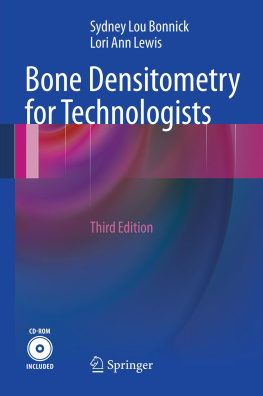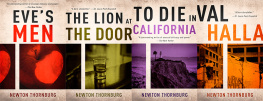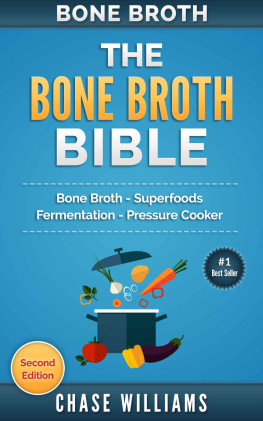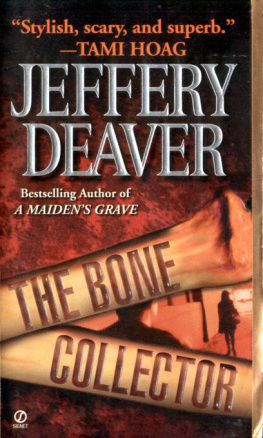
Bone Histology
of Fossil Tetrapods
Copyright 2013. University of California Press. All rights reserved. May not be reproduced in any form without permission from the publisher, except fair uses permitted under U.S. or applicable copyright law.
EBSCO Publishing : eBook Collection (EBSCOhost) - printed on 12/8/2022 2:33 PM via
AN: 533104 ; Kevin Padian, Ellen-Thrse Lamm.; Bone Histology of Fossil Tetrapods : Advancing Methods, Analysis, and Interpretation
Account: ns075055
Bone Histology
of Fossil Tetrapods
Advancing Methods, Analysis,
and Interpretation
Edited by
Kevin Padian
Ellen-Thrse Lamm

UNIVERSITY OF CALIFORNIA PRESS
BerkeleyLos AngelesLondon
EBSCOhost - printed on 12/8/2022 2:33 PM via . All use subject to https://www.ebsco.com/terms-of-use
University of California Press, one of the most distinguished university presses in the United States, enriches lives around the world by advancing scholarship in the humanities, social sciences, and natural sciences. Its activities are supported by the UC Press Foundation and by philanthropic contributions from individuals and institutions. For more information, visit www.ucpress.edu.
University of California Press
Berkeley and Los Angeles, California
University of California Press, Ltd.
London, England
2013 by The Regents of the University of California
Library of Congress Cataloging-in-Publication Data
Bone histology of fossil tetrapods : advancing methods, analysis, and interpretation / edited by Kevin Padian, Ellen-Therese Lamm.
p. cm.
Includes bibliographical references and index.
ISBN 978-0-520-27352-8 (cloth : alk. paper)
eISBN 9780520955110
1. Vertebrates, FossilMicrostructure. I. Padian, Kevin. II. Lamm, Ellen-Thrse, 1966
QE841.B674 2013
566-dc23 2012018397
Manufactured in China
22 21 20 19 18 17 16 15 14 13
10 9 8 7 6 5 4 3 2 1
The paper used in this publication meets the minimum requirements of ANSI/NISO Z39.48-1992 (R 2002) (Permanence of Paper).
Cover illustration: Tyrannosaurus rex fibulaMuseum of the Rockies specimen (MOR 1152). Photographed on a Leica DMEP Microscope under polarized light with a Lambda compensator. Photo by Ellen-Thrse Lamm.
EBSCOhost - printed on 12/8/2022 2:33 PM via . All use subject to https://www.ebsco.com/terms-of-use
Dedicated to three pioneers of
vertebrate paleohistology
Donald H. Enlow
Armand J. de Ricqls
John R. Horner
with respect and affection from their
colleagues, students, and friends
EBSCOhost - printed on 12/8/2022 2:33 PM via . All use subject to https://www.ebsco.com/terms-of-use
CONTENTS
Kevin Padian
Adam K. Huttenlocker, Holly Woodward, and Brian K. Hall
Kevin Padian, Ellen-Thrse Lamm, and Sarah Werning
Ellen-Thrse Lamm
Timothy Bromage and Sarah Werning
Laura Wilson and Maria de Boef Miara
Holly N. Woodward, Kevin Padian, and Andrew H. Lee
Andrew H. Lee, Adam K. Huttenlocker, Kevin Padian, and Holly N. Woodward
Kevin Padian and Koen Stein
Kevin Padian, Maria de Boef Miara, Hans C.E. Larsson, Laura Wilson, and Timothy Bromage
EBSCOhost - printed on 12/8/2022 2:33 PM via . All use subject to https://www.ebsco.com/terms-of-use
PREFACE
This book was conceived thanks to Dr. Susan Williams, Drew Lees former colleague at Ohio University in Athens. We were discussing with Susan the explosion of histological studies of fossil bone that had occurred in the past two decades, and we thought that it might be helpful to provide guidance to people new to the field about how to select, process, and image specimens, and about the questions and issues in the field that had been addressed and that needed further work. Susan suggested that we look into convening a National Evolutionary Synthesis Center (NESCent) workshop on the subject, because she had found them very rewarding in her own field. We contacted Dr. Kathleen Smith, then the Director of NESCent, and she found us funds to bring a small group of people together for a short workshop in December 2009. It was so successful that we decided to use our discussions as the basis for an introductory book.
Our working group included experienced hands as well as graduate students and new faculty members who are making some of the strongest contributions and innovations in the field. We would have liked to include a great many other colleagues in our group, but unfortunately the pressures of time, previous commitments, and our own limited funding prevailed as they usually do, so we were not able to assemble every one of the stars of our field. Nevertheless they and their work were with us in spirit, and some have served as useful advisors and reviewers of these chapters.
We do not intend this book to be an exhaustive, encyclopedic treatment of all subjects related to fossil bone histology or to the biology of bone. We wanted to provide an introduction to the problems and methods of the field. Why study the bone histology of fossil tetrapods? What questions can it illuminate? How do we explain variations in the expression of bone tissue in fossil tetrapods? How do you decide when sectioning a fossil bone might be a good idea? How do you select the best candidate bones? How do you prepare them for sectioning, and how do you make the sections and slides? How do you ensure the best quality photographs? How do you scale and archive your images? What data should accompany them? How do you know if your observations are showing some really important new insights?
Because many of these questions are interrelated, and because many studies have bearing on more than one aspect of these questions, readers will note that there is some overlap in coverage from one chapter to another. We felt that it would be preferable to remind readers of connections to other subjects within the book than to leave them wondering sometimes about what those connections might be.
We dont guarantee that all questions will be fully answered, but we intend to provide a start, as well as food for thought for more experienced researchers. We also would like colleagues in related fields, such as human biology and medicine, forensic anthropology, bone mechanics, and vertebrate functional morphology to see what kinds of insights and advances have been made in our field in the past two decades.
The dissemination of information is changing very quickly these days. We wanted our efforts to be as comprehensively available as possible. A traditional book is one manifestation of this, and we hope that it will be useful to many colleagues. Others may wish to download parts of the book only, and for this reason the University of California Press was our preferred publisher, because they were able to make this option available through eBooks. But we also wanted to include more images, more details, and updates to our treatments of methods and issues in the field. For this reason, we have established an independent companion website that will eventually include all the information in this book and more. It can be found at www.histoworkshop.org. Keep checking it for updates, and if you have things to contribute or subjects that you would like covered, please contact the webmaster.
We thank Kathleen Smith, Danielle Wilson, and the staff of NESCent for their hospitality and support. And we thank Chuck Crumly and the staff at the University of California Press for enabling us to produce this work in the formats that will make it most useful for our community of scholars. We are indebted to Charles E. Wilson III and Frank S. Benjamin of McKenna, Long & Aldridge LLP for their advice and counsel on copyright issues related to histological image data. Among all our participants and contributors, as a group we have to single out for thanks Ellen-Thrse Lamm, the Lapidaire Extraordinaire of the Museum of the Rockies. Ellen has been conducting workshops on bone histology for many years and intending to put all her carefully crafted advice, handouts, and guides into print one day. We are delighted that she let this be the day.
Next page










